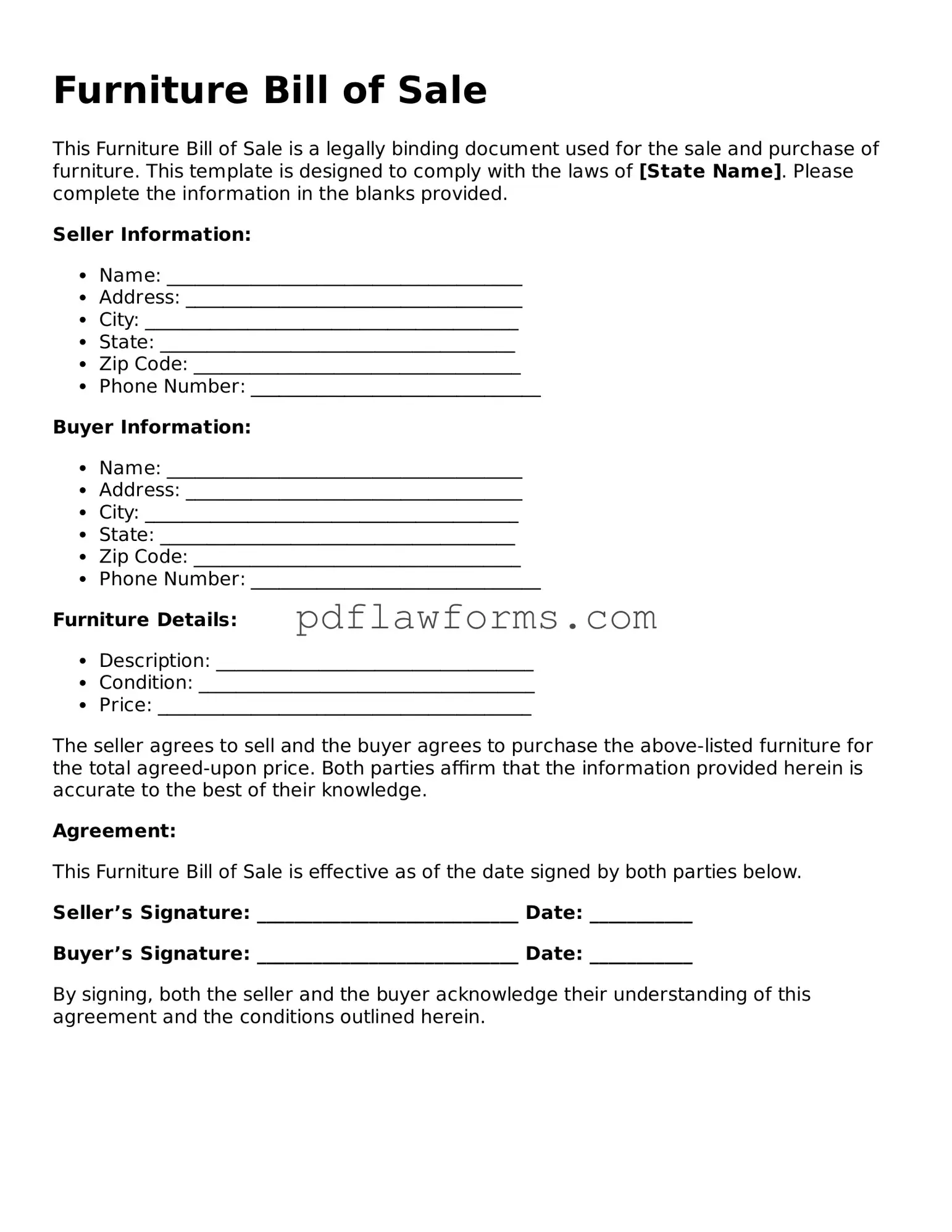Filling out a Furniture Bill of Sale form might seem straightforward, but many people make common mistakes that can lead to confusion or even disputes down the line. One frequent error is not providing complete information about the furniture being sold. It’s crucial to include details like the brand, model, and condition of the items. Omitting this information can create misunderstandings between the buyer and seller.
Another mistake often made is neglecting to include the sale price. This might seem minor, but without a clear price, it can be challenging to establish the terms of the sale later. Both parties should be on the same page regarding how much was paid, which can prevent potential disagreements in the future.
Many individuals also forget to include the date of the sale. This detail is essential for record-keeping and can be important if any issues arise after the transaction. A missing date can lead to confusion about when the sale took place and complicate any potential warranty claims or returns.
Additionally, signatures are sometimes overlooked. Both the buyer and seller should sign the form to make it legally binding. If one party fails to sign, it could lead to challenges in enforcing the agreement. Always double-check that both parties have signed before considering the transaction complete.
Another common pitfall is failing to provide contact information for both parties. Including phone numbers or email addresses can be invaluable if either party needs to reach out after the sale. Without this information, it can be difficult to resolve any questions or issues that may arise.
Lastly, people often forget to keep a copy of the completed form. Once the transaction is done, having a record is vital. It serves as proof of the sale and can be referenced in case of disputes. Make sure to keep a copy for your records and encourage the buyer to do the same.
